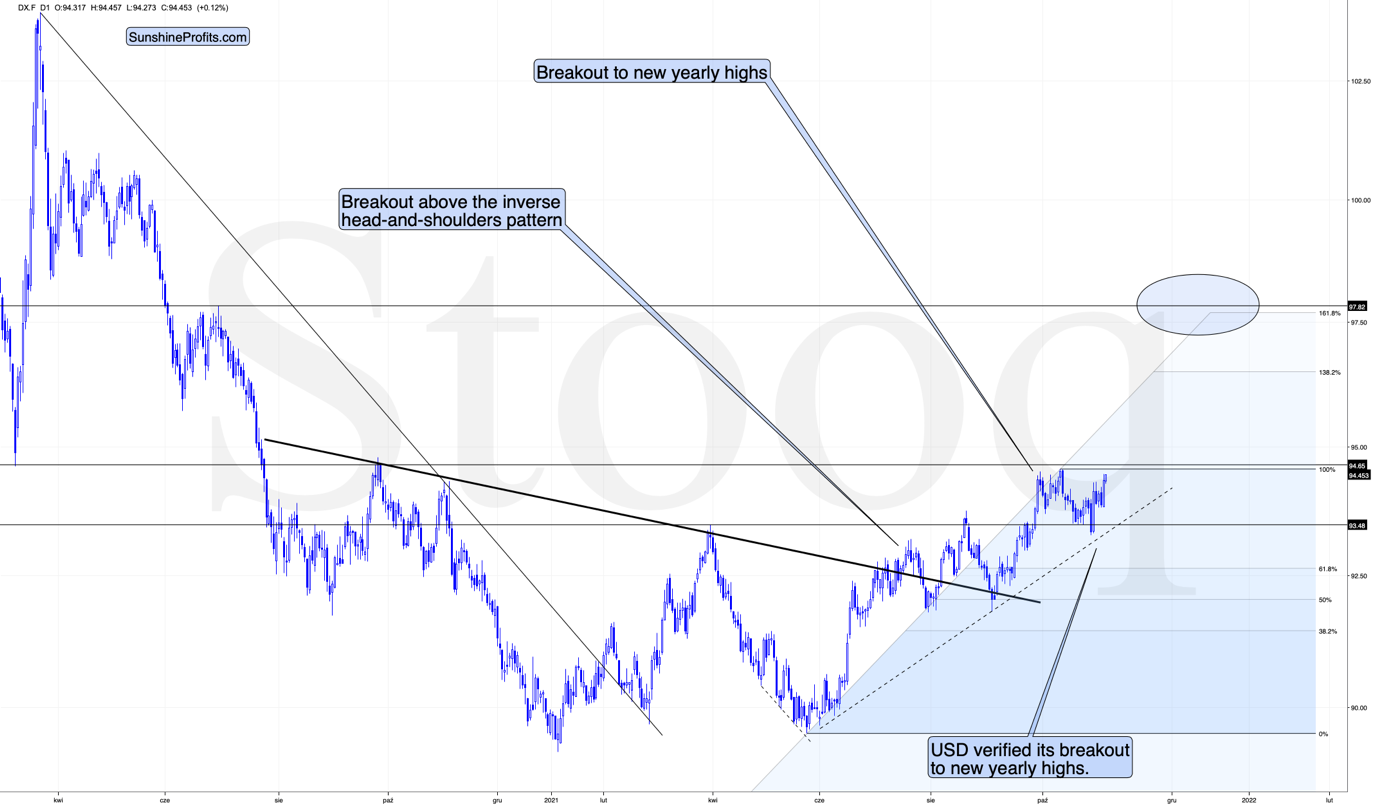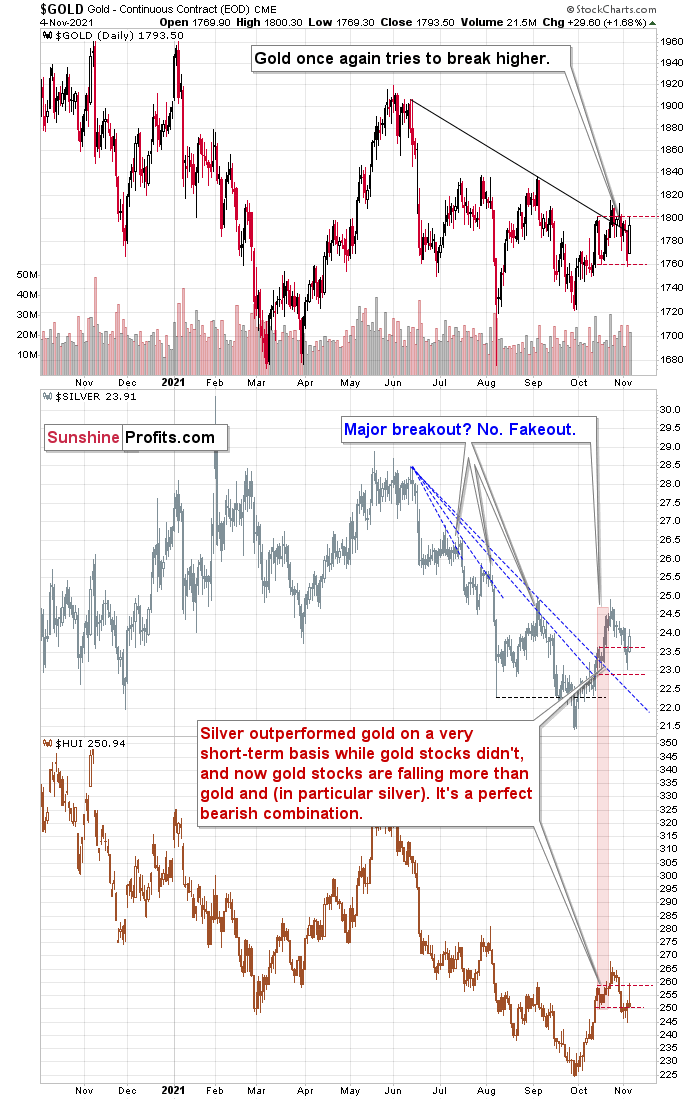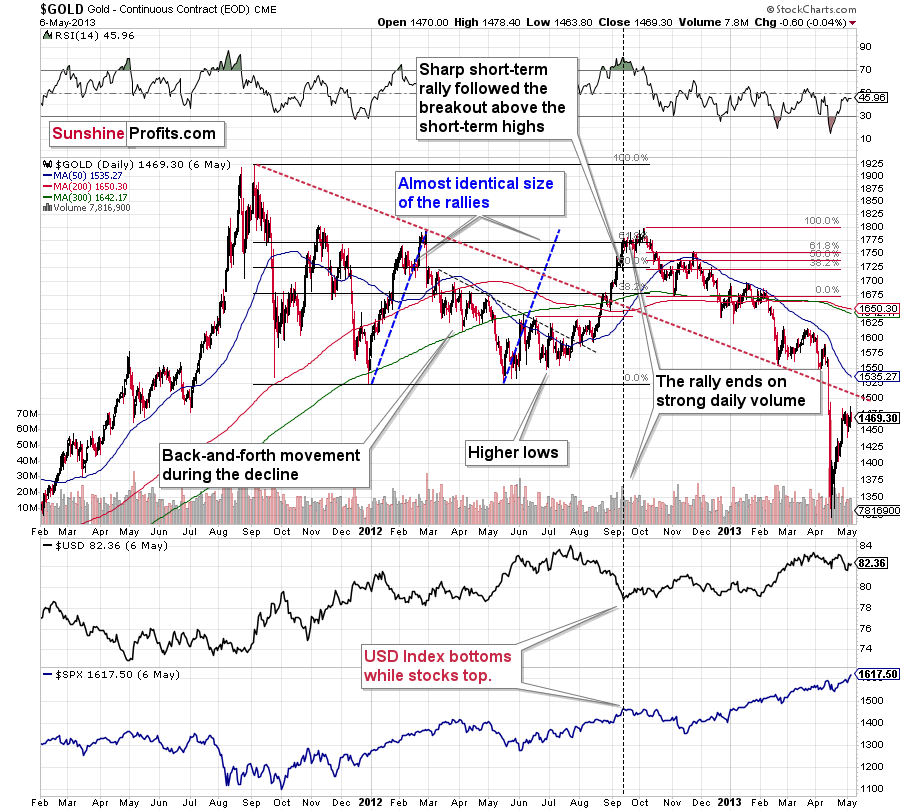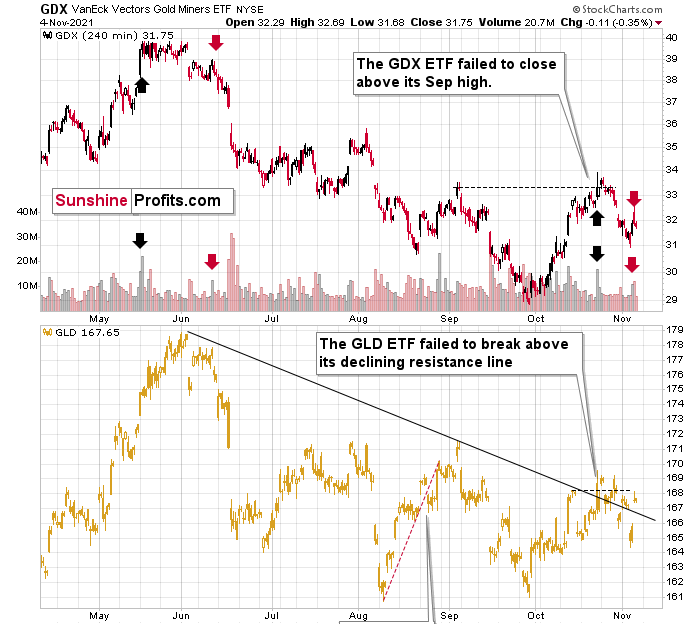Lagarde spoke once again last week, and the markets reacted in a rather erratic manner once again too. The most important short-term details remain intact, though:
- The USD Index remains above its previous 2021 highs.
- Gold miners’ underperformance relative to gold is back with a vengeance.
Let’s take a look at the charts.
The USD Index is once again moving higher, and once it breaks above its October highs, the volatility might be truly substantial. In fact, the USDX might then quickly shoot up to 97, just as it declined quickly from that level to the current levels in mid-2020.
The implications for the precious metals sector would be—of course—very bearish.
Thursday, gold moved higher despite USD’s upswing, which might be viewed as bullish on regular days, but when there are comments regarding the euro on a given day, things are not that simple.
Gold was not that strong against the USD, it was mostly strong against the euro. But will this move continue? It’s doubtful. Instead, what we see now seems very similar to what we saw in 2013 before the decline accelerated. The back-and-forth decline, which I mentioned so many times before, simply continues.
Just as the back-and-forth movement wasn’t bullish in early 2013, it’s not bullish now. And once gold moves lower, the size of the decline is likely to surprise most investors, just as it did in 2013.
Please note that on the previous chart I marked the mid-October highs and lows with red, dashed lines. This makes it easy to see which market is outperforming and which isn’t. And, well, it’s clear that while gold and silver are quite strong (gold is slightly below the highs, while silver is above them), gold stocks are very weak. After Friday’s intraday rally, they declined back to the October lows. In other words, the corrective upswing might be over at this point.
In Thursday's analysis, I wrote the following about the GDX’s performance:
"The above 4-hour GDX ETF chart allows us to see what happened in the first and second half of each session. In short, we saw the upswing—on quite strong volume— in the final part of the day. Was it truly a game-changer?
"The context here is provided by the preceding decline and the rally that preceded the decline. The last time we saw something similar was in May and June. The similarity is not just in price movement, but also in terms of volume.
"In both cases (in late October and in mid-May), the GDX topped on strong volume, then it moved back-and-forth for a few days, after which it declined again. However, before the decline accelerated and the GDX plunged, we first saw a small counter-trend (and fake!) sign of strength that materialized on relatively strong volume.
"I marked the first (topping) volume spike with black arrows, and the final counter-trend (fake) rallies and their volume spikes with red arrows.
"Did the history rhyme? That seems quite likely. And if so, the implications are not bullish, but bearish.
"Also, since the rally and broad top in mid-2021 took longer to form than what we saw in October, we might also wait less for the decline’s continuation in this case than we did in June. In other words, bigger declines could be days, not weeks away. You will find additional explanations that I included in today’s video analysis of the above chart."
The above remains up-to-date, and the intraday reversal (and decline in terms of the closing prices) further confirms it. The outlook for the precious metals sector remains bearish.




